Google Chrome's "Articles for You"
Also known as “Chrome Content Suggestions” or “Chrome Suggestions”, Google Chrome Suggestions (GCS) -
.jpg?inst-v=51f52002-ab65-4b11-a864-e862b0969b62)
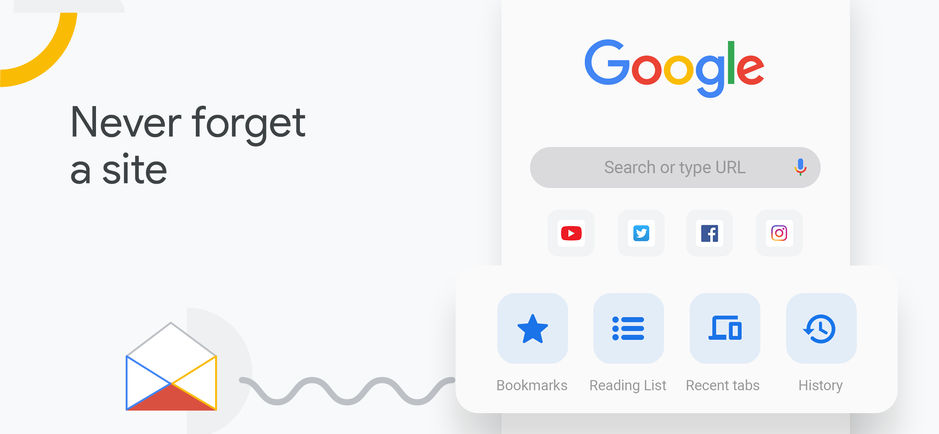
Articles for You traffic grew a shocking 2,100 percent in 2017 — from driving 15 million visits per month to publishers using Chartbeat to 341 million visits per month.
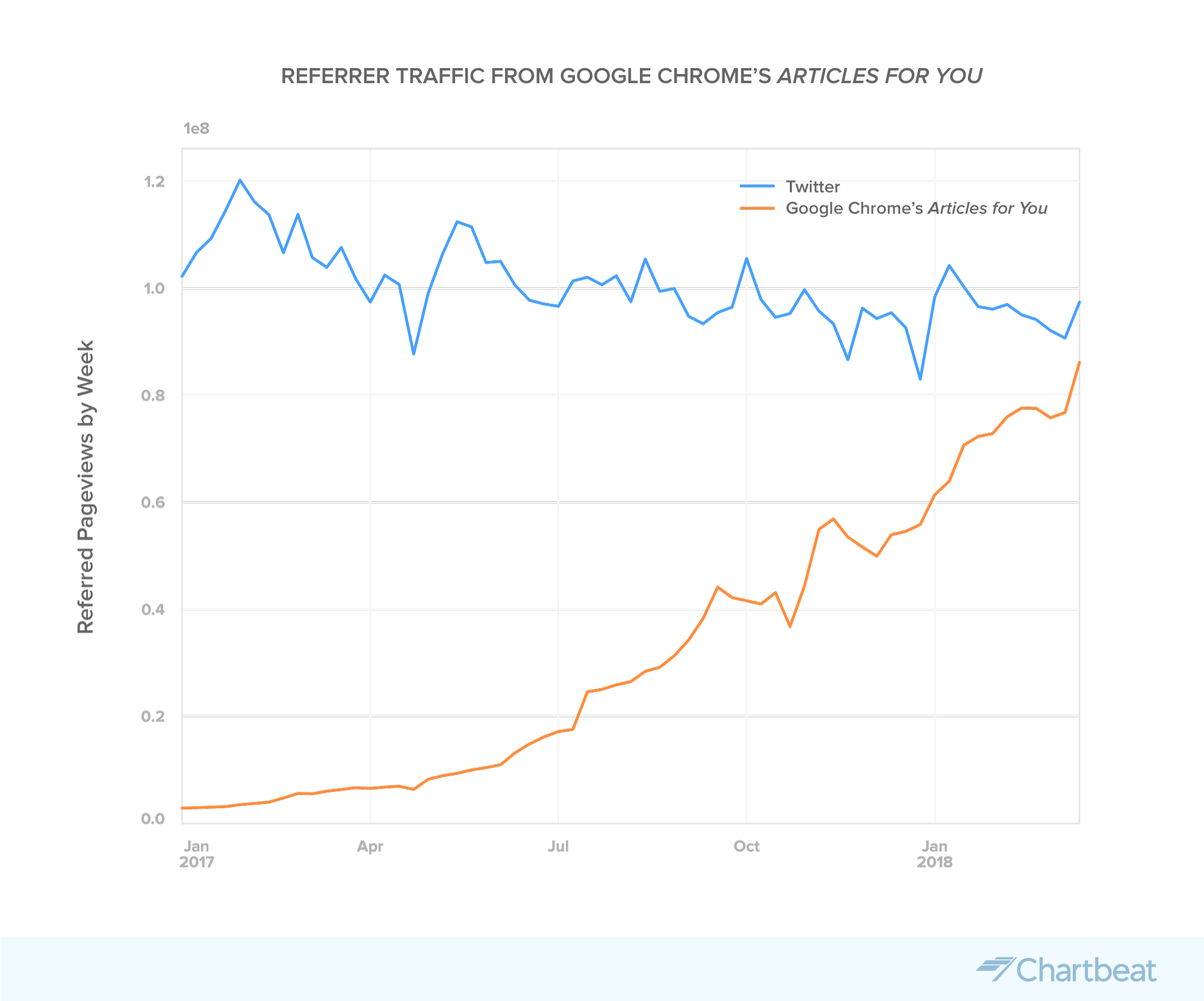
First week of February (2018), the traffic Google sent to publishers was just outrageous. A tremendous number to 466 million additional pageviews was sent to publishers, which was nearly 40 percent more, than it did in January 2017. The source of all these pageviews was mainly from mobile devices and from AMP. Over the same period of time Facebook sent 200 million fewer which was of 20 percent less. The analysis was done by Chartbeat.
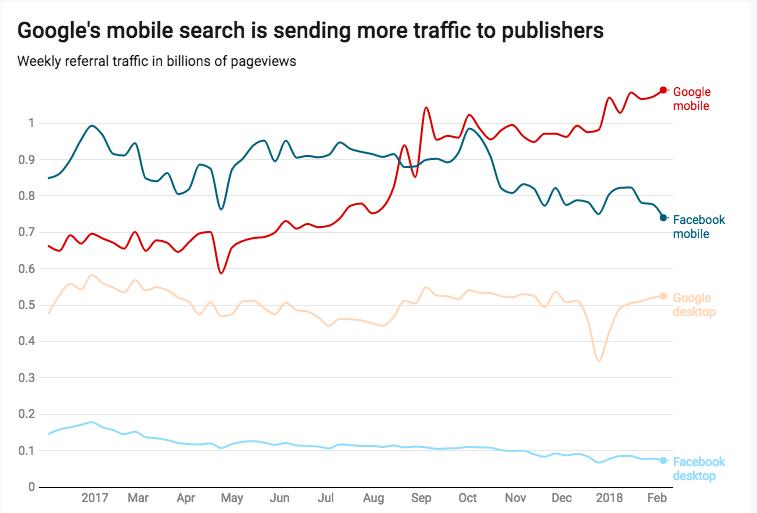 Source: datawrapper.de
Source: datawrapper.de
Under the Hood
- Mobile traffic continues to grow as users transition away from desktop to mobile devices. Since January 2017, mobile web traffic to Chartbeat clients has grown over 20 percent, reflecting just how much more time users are spending on their mobile devices.
- Articles for You is also a default on the most popular browser in the world. Chrome users contribute 44 percent of the overall traffic to Chartbeat clients and 42 percent of the mobile traffic.
- A default on Chrome is a great place to capture user attention. Articles for You is on every single “new tab” page in each mobile Chrome Browser and accounts for roughly 12 percent of site visits on Android Chrome as per Chartbeat’s March data.
- Further, Articles for You surfaces predominantly AMP pages (72 percent are AMP), where visitors are 35 percent more engaged than on the standard mobile web.
This speaks to the incredible power and influence that Google has over a user’s browsing behaviour and, consequently, publisher traffic. Once a user has chosen Chrome as her browser, Articles for You is almost unavoidable. It is placed prominently within a user’s mobile experience, personalized with the immense knowledge that Google has about one’s browsing behaviour and interests and frequently boosted by the speed of AMP.
Does AMP matter for Articles for you?
AMP isn't required for "Articles for you". At the same time DO implement AMP if you haven't done already. Actually, since 72% of these results are AMP, implementing it isn't a bad idea at all so that you could show up there. Even though Google says that mobile site speed should be considered for a better search ranking, your site must have AMP to be featured in the search carousel. But, you don't need to have AMP enabled to be featured in cards. There are several referrals from Google cards that were not AMP, and they were rates the same as AMP-enabled.
How to Measure Articles for You Traffic?
The exact source of this traffic isn't entirely clear. But you can have a look in your analytics to have a sense of how much traffic you're getting from Google's content suggestions by isolating Articles for You traffic. The traffic for that source should show up as:

As the main traffic source is AMP (around 72% according to Chartbeat), if you're using a separate Analytics to track AMP traffic (Google's guidelines), this is where you'll see the traffic. In case you're NOT using AMP, please make sure that the property or report suite you're using includes mobile traffic.
Eg: Go to Google Analytics and then to Acquisition > Referrals. When going through your Source column, look for "googleapis.com" (the same report availably in Adobe Analytics by going to Traffic > Referrers). This is how it should look like:

Once on Googleapis.com, it'll show the rest of the referral path:
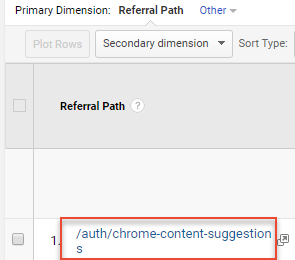
This is where you can see how much traffic you're getting from Articles for you. Now you can create a segment so that you can use it in conjunction with other reports.
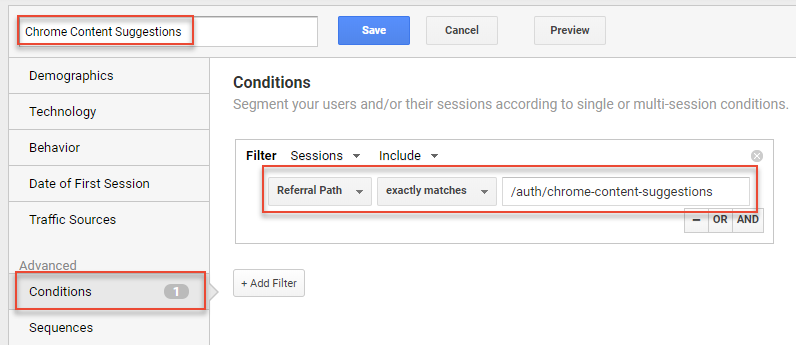
Source: Clickseed.com
Are Content Suggestions the Future of SEO?
This initiative has given Google's new $300 millions on Google New Initiative, so, I guess they'll be continuing to introduce similar discovery features to improve the visibility and engagement of the publisher's content. As Chrome's Articles for You and Cards features are still relatively new, they are already diving stunning high visibility to publishers' content. So far there's not specifications about that. The time will show us if the users will adopt these new features. Meanwhile, SEO (especially for new publishers) WILL continue evolving rapidly. It's all becoming less about ranking in the SERPs for specific queries, but more about understanding the context, intent and interests to keep your audience coming back to your site with higher frequency and to retain them on your content.
AMP Stories
After Google rolled out their answer to Snapchat and Instagram Stories at their developer conference, called AMP Stories, you sure should be expecting an increase in Google's referral traffic to publishers.